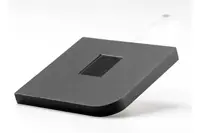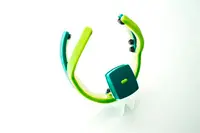Electronics News
Archive : 25 August 2015 год
 Norway's NEXT Biometrics has unveiled an ultra-thin fingerprint sensor designed for smartphones and tablets which the firm says could eliminate the need for large bezels, or metallic frames.
Norway's NEXT Biometrics has unveiled an ultra-thin fingerprint sensor designed for smartphones and tablets which the firm says could eliminate the need for large bezels, or metallic frames.
Tore Etholm-Idsoe, ceo of NEXT Biometrics, said, " Removing the bezel enables industrial designers at NEXT customer companies to determine the size and shape of sensors simply by the designs of the opening in the smartphone back covers or notebook palm rests."
The company said that the new sensor designs enhance the NEXT esd-robustness (electrostatic discharges) to levels compliant with esd-standards, meeting the requirements of the mass markets relevant for fingerprint sensors.
"Targeting significant market share in the smartphone, tablet and notebook markets, NEXT has been aiming to better meet the requirements of industrial designers," Etholm-Idsoe continued. "Our NEXT sensors will now be virtually flush with the surroundings, sunken in by 0.4 to 0.6mm. Such minimum guidance for uniform finger placement is important for the user experience of any fingerprint system."
The Oslo-based company has been using its development teams in Seattle and Taipei on the design.
Author
Tom Austin-Morgan
Source: www.newelectronics.co.uk
 Imec, Holst Centre and the Industrial Design Engineering (IDE) faculty of Delft University of Technology (TU Delft) have announced the introduction of a wireless electroencephalogram (EEG) headset that can be worn comfortably and achieves a high-quality EEG signal. The headset is said to enable effective brain-computer interfacing and can monitor emotions and mood in daily life situations using a smartphone app.
Imec, Holst Centre and the Industrial Design Engineering (IDE) faculty of Delft University of Technology (TU Delft) have announced the introduction of a wireless electroencephalogram (EEG) headset that can be worn comfortably and achieves a high-quality EEG signal. The headset is said to enable effective brain-computer interfacing and can monitor emotions and mood in daily life situations using a smartphone app.
Imec and Holst Centre aim to extend the functionality of consumer applications and true healthcare monitoring wearables. To realise this, they develop headsets that combine medical-grade data acquisition with increased comfort. Such headsets can be used in consumer applications such as games that monitor relaxation, engagement and concentration. Wireless headsets can also be used for attention training, sleep training and treatment of ADHD.
"Leveraging imec's background in EEG sensing, dry polymer and active electrodes, miniaturised and low-power data acquisition, and low-power wireless interfaces to smartphones, we were able to focus on the ergonomics of this project. In doing so, we have successfully realised this unique combination of comfort and effectiveness at the lowest possible cost to the future user," said Bernard Grundlehner, EEG system architect at imec.
To provide good signal quality, the dry electrodes must be applied to the head with sufficient pressure. This becomes especially critical when the measurement is done over longer periods of time. It is also very important to retain this balance to accommodate a variety of people with different head sizes and shapes. However, increasing the pressure can cause user discomfort as evidenced by previous product iterations.
Imec and Holst Centre's headset manages to strike a balance between comfort and signal quality by a design procedure that optimises shape and stiffness by prototyping and testing repeatedly in very short loops. A team of six master students from the faculty IDE of TU Delft worked on this challenge in their Advanced Embodiment Design project. After an analysis of the technology, design research was carried out among potential users and applications. This research led to the development of a concept which minimises intrusiveness, making comfort possible for a large segment of the targeted population outside of a controlled research environment.
The EEG headset is manufactured in one piece using 3D printing techniques, after which the electronic components are applied and covered by a 3D printed rubber inlay. The sensors that acquire the EEG signal are situated at the front of the headset in order to allow for optimal EEG signal acquisition related to emotion and mood variations. The mobile app relates the user's emotional state to environmental information such as agenda, location, proximity to others and time of day, in order to provide feedback about the unconscious effects of the environment on the user's emotions, thus creating awareness and actionable new insights.
Author
Tom Austin-Morgan
Source: www.newelectronics.co.uk

